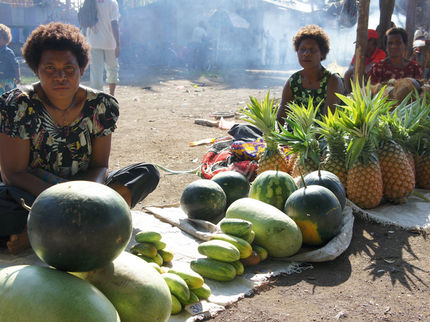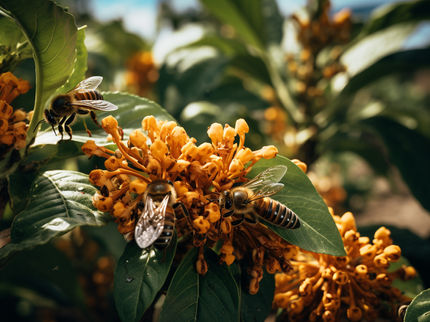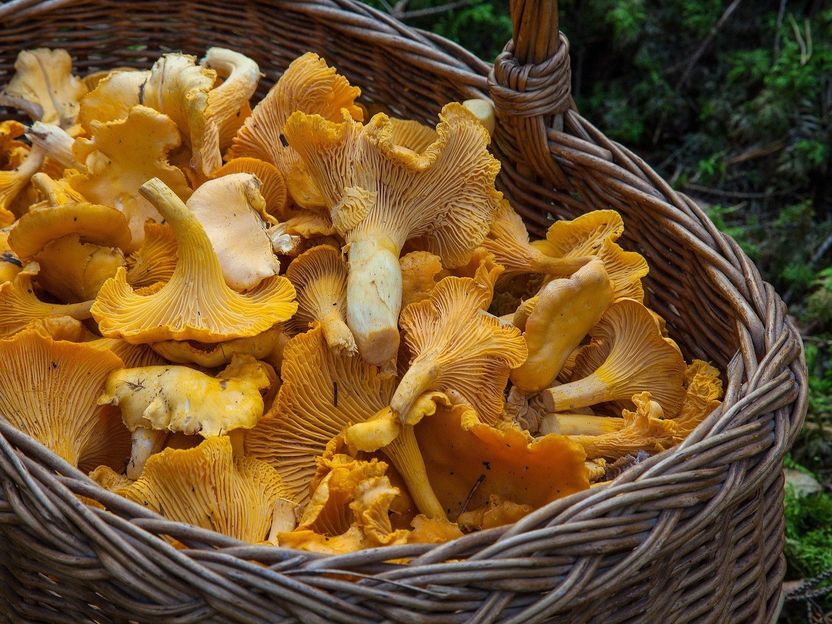Optimum shade for cocoa
As chocolate becomes ever more popular, demand for cocoa keeps rising. For production to keep up, agricultural practices have to become more sustainable. ETH researchers tested what shade trees can contribute to solving this problem.
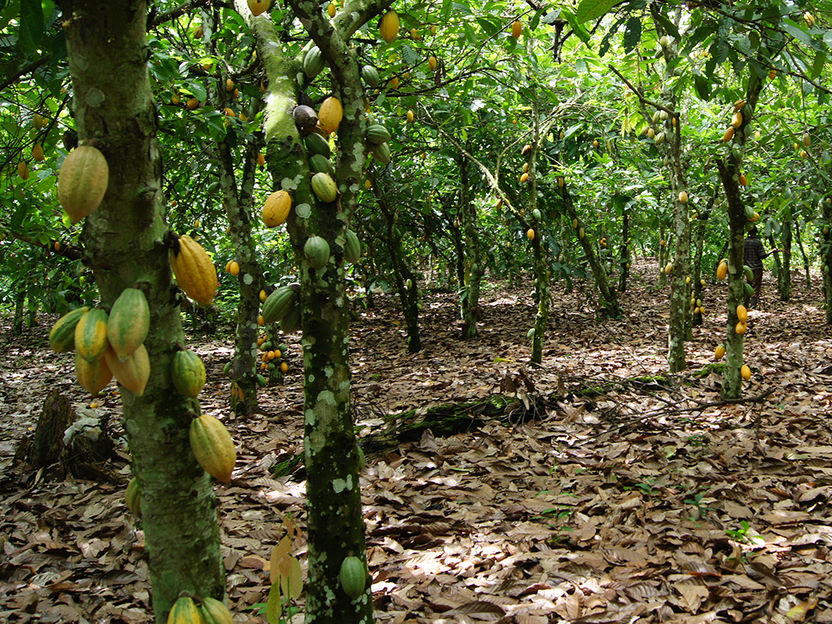
Cocoa plantation in Ghana: Under a shade-tree cover of 30 percent, shade trees had a positive effect on cocoa plants compared to areas without shade trees.
Wilma Blaser / ETH Zürich
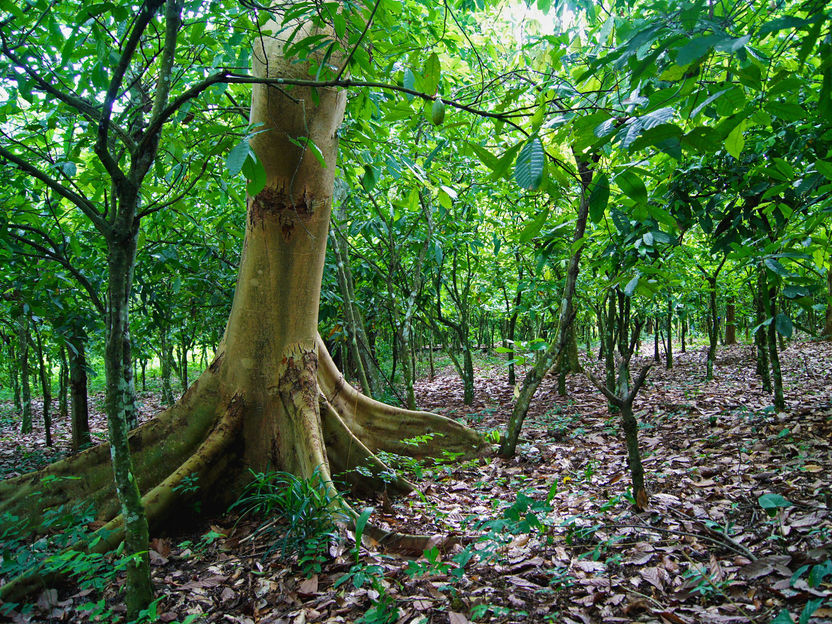
Small-scale cocoa plantation under the protective canopy of a shade tree.
Wilma Blaser / ETH Zürich
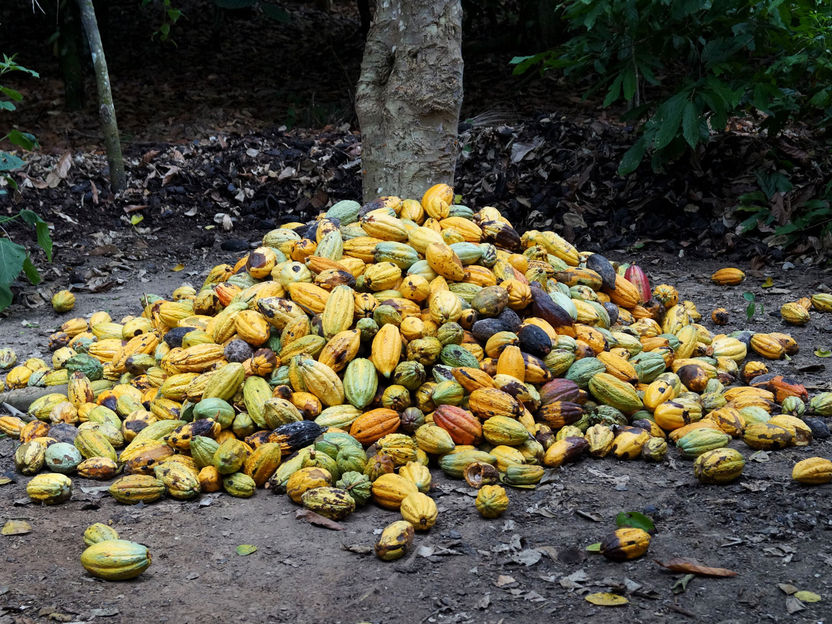
Cocoa pods harvested.
Wilma Blaser / ETH Zürich

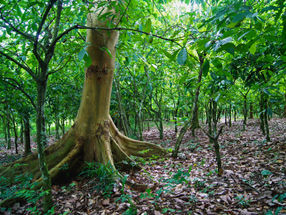

Chocolate consumption is increasing around the world. Yet, cocoa farmers, most of them smallholders, have to cope with ageing plantations, decreasing soil fertility, increasing rates of pests and disease, and the consequences of climate change. As a result, cocoa could become scarce in the foreseeable future.
Stable yields thanks to sustainable farming systems
Researchers in the Sustainable Agroecosystems group at ETH Zurich aim to find solutions for these problems. “Our goal is to develop sustainable farming systems that maintain or ideally even increase agricultural production over the long term, and provide as many ecosystem services possible,” explains Johan Six, head of the group. Amongst others, ecosystem services include the maintenance of biodiversity of flora and fauna and the sequestration of carbon from the air into soils and biomass, which should help to mitigate climate change.
Agroforestry systems hold the promise for sustainable cocoa cultivation. Historically, cocoa was grown under the shade of other trees but these systems were gradually replaced by higher yielding monocultures. Today, attempts are being made to go back to cultivating cocoa beneath the canopy of larger trees. The rationale behind this is that this shade could protect the cocoa from too much sun, regulate temperature and humidity, provide a habitat for animals and plants, and keep harmful organisms in check. Shade trees could also maintain soil fertility and absorb carbon out of the atmosphere. However, they can also compete with the cocoa plants for light and nutrients and thus reduce yield. Research investigating whether the benefits of shade trees outweigh their costs has rarely been done so far; there are no studies that assess all costs and benefits together in a single study to develop specific recommendations for the optimum degree of shade.
Do shade trees live up to their promise?
“We were interested in whether the shade trees could indeed deliver everything they promise, and how we can optimise cocoa agroforestry systems,” explains Wilma Blaser, a postdoctoral fellow in Six’s group. In a field study, they therefore compared shaded and unshaded cocoa systems in Ghana, West Africa, the world’s second largest cocoa producer. They worked with local researchers to examine and measure the effects of shade trees in smallholders’ cocoa fields.
The researchers found that under a shade-tree cover of approximately 30 percent, shade trees had a predominantly positive effect on cocoa plants compared to areas without shade trees. This amount of shade is ideal for keeping pests and diseases in check while maintaining maximum soil moisture. The cooling effect on temperature, the number of animal and plant species in the field, and the carbon sequestration all increase with an increase in the amount of shade. Up to about 30 percent shade, cocoa yield is not compromised. More shade, however, reduces the yield, as additional trees compete more intensely with the cocoa plants for light, water and/or nutrients. “The optimal amount of shade is therefore a cost-benefit consideration,” Blaser explains. There is one promise that the shade trees seem, however, unable to keep: the amount of nutrients in the soil does not automatically increase with a rise in the number of trees.
Eco-friendlier = more stable
All in all, the inclusion of shade trees in cocoa fields had a predominantly positive effect on ecosystem services, though the researchers emphasise that even the best agroecosystem cannot replace the ecosystem services provided by natural ecosystems when it comes to, say, carbon fixation or biodiversity. As Six says, “Agriculture is never natural; the idea behind agroecology is simply to infuse more ecology into agriculture”.
Blaser continues: “More ecology can make farming more sustainable and more stable.” For example, a higher diversity of plant species in an agricultural system can potentially keep diseases from spreading and the temperature buffering effects of shade trees could contribute to higher yield stability under extreme weather conditions. “Combined these effects can lead to improved and above all longer-term yield“.
Further potential to optimise agroforestry systems
Wilma Blaser is delighted: “Thanks to our research on shade trees, we were able to put forward specific recommendations for the optimum degree of shade in cocoa farming.” The research even showed that cocoa crops could tolerate more shade than previously thought, without having a serious negative impact on the harvest. Still, efforts to increase cocoa yields in agroforestry systems require additional measures in cultivation. Blaser clarifies by saying, “Targeted application of fertiliser, timely pest control, regularly pruning, or weeding could potentially increase cocoa yields even under a higher shade canopy.”
There is still potential to optimise the choice of the right shade tree in agricultural systems, and Blaser wants to concentrate on shade-tree characteristics in her next project. She found 38 species in the farms she worked in, including orange, mango and avocado trees, all of which have different types of canopy and root systems. For example, some of them could be better soil improvers than others. Blaser aims to investigate which ones make the best shade trees for cocoa plantations.
